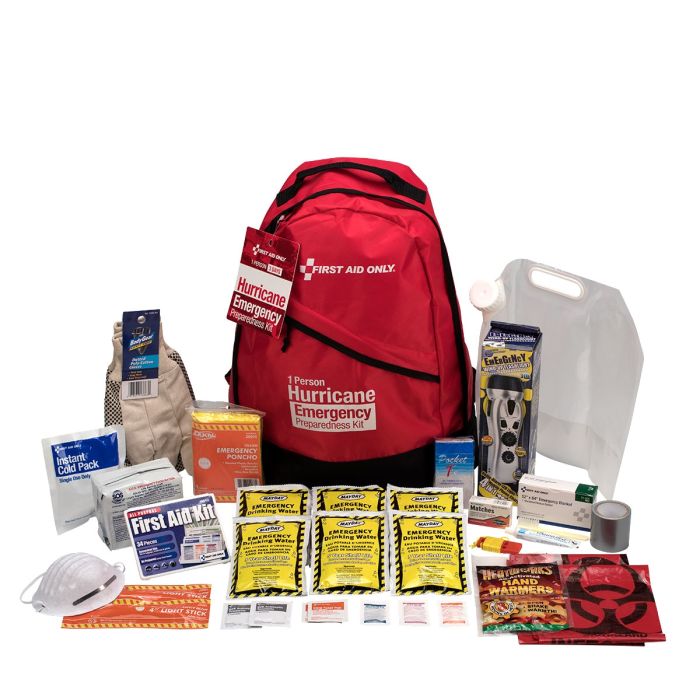Vital Emergency Preparedness: Your Comprehensive Overview
Vital Emergency Preparedness: Your Comprehensive Overview
Blog Article
Just How to Establish a Detailed Emergency Readiness Strategy
In the world of preparedness, developing a comprehensive emergency strategy is not simply a task to examine off a checklist; it is a crucial keystone of any organization or individual's strength method. By meticulously crafting a strategy that deals with different aspects of emergency situation administration, including danger assessment, communication protocols, source appropriation, and calculated decision-making, one can lay a solid foundation for protecting possessions, lives, and operations.
Significance of Emergency Situation Readiness
Emergency situation readiness is important for alleviating potential risks and ensuring the safety and security of individuals and neighborhoods. In today's world, where natural disasters, public health crises, and other emergencies can strike without warning, being prepared can make a considerable difference in decreasing the effect of these occasions. By having a well-balanced emergency situation readiness strategy in position, organizations and individuals can respond effectively, shield lives, and minimize residential property damage.
Among the main reasons that emergency situation preparedness is important is its duty in saving lives. Having a strategy that describes clear treatments for interaction, emergency situation, and discharge response can aid people act quickly and decisively when emergency situations happen (read this). This can stop injuries and fatalities by ensuring that people know what actions to take to remain secure
Additionally, emergency preparedness enhances the strength of neighborhoods. By cultivating a culture of readiness and planning for numerous circumstances, communities can jump back faster from disruptions and disasters. This resilience is essential for preserving security, connection of operations, and total health when faced with adversity.
Assessing Possible Dangers
Considering the relevance of being gotten ready for unanticipated occasions, the preliminary action in establishing an effective emergency preparedness plan includes extensively evaluating and assessing potential threats. This evaluation calls for a thorough testimonial of all feasible hazards that could influence the company, taking into consideration factors such as location, market, and historic information on events. By identifying these dangers, companies can prioritize their readiness efforts and designate resources effectively to minimize the most significant dangers.
Typical dangers that companies might deal with include all-natural disasters like earthquakes, floods, or typhoons, technical hazards such as power outages or information violations, as well as human-caused risks like accidents or intentional acts of violence. Performing a threat assessment also entails taking into consideration the possible influence of these occasions on the company's operations, staff members, clients, and credibility. By conducting a comprehensive danger analysis, companies can create tailored emergency situation response strategies that address their particular vulnerabilities and make sure reliable readiness for any type of prospective dilemma.
Creating a Communication Plan
Establishing a extensive and clear interaction strategy is important for reliable emergency preparedness within organizations. In times of dilemma, communication plays an important role in guaranteeing the safety and security and well-being of workers, stakeholders, and the area. A well-balanced interaction plan should outline clear lines of interaction, designate key workers in charge of communication tasks, and develop protocols for distributing information rapidly and precisely.
One trick aspect of producing an interaction strategy is recognizing primary and alternate communication channels (EMERGENCY PREPAREDNESS). These can include e-mail, text messaging, phone trees, social media platforms, and public address systems. It is critical to guarantee that these channels are trustworthy, accessible, and on a regular basis tested to guarantee their effectiveness during emergencies

Structure an Emergency Set
Provided the crucial importance of preparedness in times of dilemma, an essential part that organizations need to address is the facility of an emergency package. When constructing an emergency package, it is vital to consider the details requirements and conditions of the company. Furthermore, companies ought to consist of vital papers, such as contact listings, insurance information, and emergency situation reaction strategies, in waterproof containers within the package.
Developing Evacuation Procedures
To make sure the safety and security and organized discharge of personnel throughout emergencies, companies must establish clear and reliable emptying treatments. Discharge procedures need to encompass a series of possible circumstances, including fires, natural catastrophes, or various other emergencies that need quick discharge.

In addition, companies ought to develop a system for accountancy for all personnel throughout an emptying to make certain that every person has securely left the premises. Communication plays a vital function in discharge treatments, with clear directions on just how to evacuate and when to do so. Routine evaluation and upgrading of evacuation procedures based upon responses and transforming circumstances are vital to maintaining the effectiveness of the strategy.
Final Thought
To conclude, developing a thorough emergency readiness plan is crucial for making sure the security and wellness of people in the occasion of a catastrophe (EMERGENCY PREPAREDNESS). By analyzing possible threats, producing a communication plan, developing an emergency situation kit, and establishing evacuation companies, individuals and procedures can be better equipped to respond efficiently to emergencies. It is essential to prioritize preparedness efforts to mitigate the link impact of calamities and protect lives and building
In the world of readiness, developing a comprehensive emergency situation strategy is not simply a job to inspect off a checklist; it is an important foundation of any type of company or individual's resilience approach. When emergency situations take place, having a strategy that describes clear procedures for emergency situation, emptying, and interaction feedback can assist individuals act quickly and decisively. check my site. By conducting a detailed threat assessment, companies can establish tailored emergency feedback plans that address their particular vulnerabilities and guarantee reliable preparedness for any kind of potential situation
Creating a clear and comprehensive communication strategy is important for efficient emergency readiness within companies. By assessing possible threats, producing an interaction plan, building an emergency kit, and establishing evacuation organizations, individuals and treatments can be better furnished to react successfully to emergencies.
Report this page